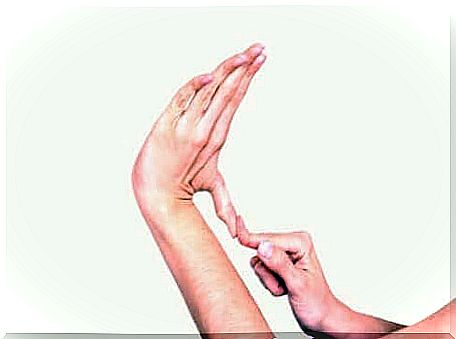Everything You Need To Know About Ehlers-Danlos’ Syndrome

There are new medical and scientific advances every day, which means more research and more information about the human body. However, there are certain diseases that have not been thoroughly studied because they affect such a small part of the population. Ehlers-Danlos’ syndrome (EDS) is one of the rare diagnoses.
Different countries and regions in the world have their own scale for what are rare or unusual diagnoses, but they do not vary too much. In Europe, for example, a rare diagnosis affects one in 2,000 people (0.05% of the population).
In today’s article we will talk about one of the rare diagnoses: Ehlers-Danlos’ syndrome (EDS). EDS is an incurable disease that affects the body’s connective tissue. The goal today is to raise awareness about this little-known syndrome and the people who live with it.

Ehlers-Danlos’ syndrome
Ehlers-Danlos’ syndrome, also known as EDS, is a group of genetic and hereditary disorders of the connective tissue that directly affect collagen, leading to problems in the skin, joints and walls of blood vessels. In the UK and other parts of the world, it is classified as a rare diagnosis.
There are different types of EDS, but all make your skin unusually stretchy and fragile, and your joints extremely flexible and elastic.
How many types of Ehlers-Danlos syndrome are there?
There are up to thirteen different types of EDS. The most common (within the limited population who have EDS, of course) are classic, hypermobile, vascular and heart valve. Here is a complete list of the types that researchers have identified:
- Classic EDS (cEDS)
- Classic-like EDS (clEDS)
- Cardiac-valvular EDS (cvEDS)
- Vascular EDS (VEDS)
- Hypermobile EDS
- Arthrocalasia EDS (aEDS)
- Dermatosparaxis EDS (dEDS)
- Kyphoscoliotic EDS (kEDS)
- Brittle cornea syndrome (BCS)
- Spondylodysplastic EDS (SPEDS)
- Muscle Contractural EDS (mcEDS)
- Myopathic EDS (mEDS)
- Periodontal EDS (pEDS)
Symptoms of EDS
Individuals suffering from EDS begin to experience changes and pain that become more and more constant over time. While each type has its own characteristic symptoms, the ones we mentioned above share some common features.
It is important to note that having one of these symptoms is not a definite sign of EDS per se. Similarly, having one of these symptoms does not mean that you do not have the disease.
The most common symptom is back pain. More specifically, the patient may feel that the back is overloaded and is likely to experience muscle cramps. Some describe it as having a bag of cement on their back.
Another common symptom is hypermobility in the ligaments. People with EDS are incredibly flexible because the ligaments are like the strings of a guitar that does not fit properly.
Extremely elastic and slightly damaged skin is also common. A seemingly harmless thing like bumping into a table can lead to extensive bruising. What would be a minor abrasion in someone without EDS can be a serious wound for an EDS patient.
Flat feet are another possible feature of an EDS patient. They often have cramps in their feet and go a certain way to make up for it. One way to test it is to look at the soles of your shoes. Usually one side is much more worn than the other. Vision problems are another common occurrence.
The worst part of Ehlers-Danlos’ syndrome is loose joints. Loss of cartilage over time means that the bones move too much around, which can lead to severe dislocations.
People with EDS must also look for signs of early arthritis. Another interesting feature of this disease is that it gives patients very soft, almost velvety skin.

Diagnosis and treatment
In most cases, people with EDS have to go through a long and intense process to get a diagnosis. It usually takes a minimum of three years. Before an EDS diagnosis, patients often hear that they have other diseases, such as fibromyalgia.
What EDS has in common with fibromyalgia, chronic fatigue syndrome and lupus, for example, is that these all fall under the rheumatology specialty. They also have some common symptoms, and it is not surprising that they are often confused with each other.
Another common feature is that none of them have a cure. If your doctor diagnoses you with one of these diseases, you will undergo treatment to resolve the symptoms. Sessions with a physiotherapist can help stop the development of joint mobility.
Depending on the type of EDS your doctor thinks you may have, you will need to undergo a series of examinations. In vardiac-valvular EDS, for example, a cardiologist would do a comprehensive examination to rule out Marfan syndrome, which is very common in patients with this type of EDS. It can be very dangerous if left untreated.
If you or someone you know has or may have EDS, you should consult a specialist.








